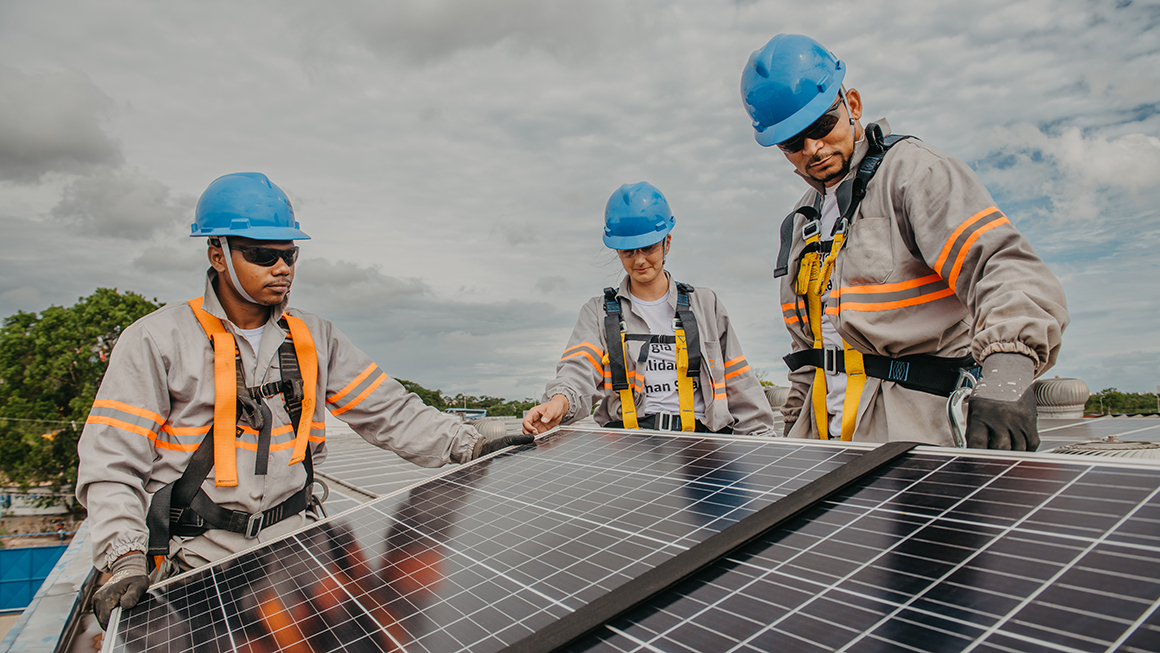
Recent investments in clean energy under the Bipartisan Infrastructure Law and the Inflation Reduction Act will give communities across the US the opportunity to create new jobs in clean energy. But will these new jobs be good jobs—and who will have access to them?
A new project from the Urban Institute finds that while clean energy jobs are more likely to be high quality (or offer better wages, benefits, and job security) compared with the overall labor market, women and people of color are underrepresented in the potential clean energy workforce. Our analysis also finds that high-quality jobs in clean energy are generally in the following occupations: engineering and architecture; management; installation, maintenance, and repair; and construction and extraction.
To advance equity in the clean energy workforce, communities could work with universities, employers, and unions to address barriers to high-quality jobs and help women and people of color access higher education and workforce development opportunities.
Universities and clean energy employers could help advance access to technical degrees and on-the-job training
Because engineering and architecture jobs in clean energy often require technical degrees, advancing equitable access to these jobs will require increasing access to related four-year degrees among women and people of color.
According to a report by the American Society for Engineering, roughly one-quarter of bachelor’s degrees in engineering were awarded to women (PDF) in 2022. About 25 percent of women leave engineering occupations (PDF) within five years, often because of insufficient job training and development opportunities (PDF) and less overall support from supervisors and peers.
People of color are also underrepresented among recent engineering graduates. In 2021, Latine people were about 19 percent of the US population but were awarded only 13.6 percent of bachelor’s degrees in engineering (PDF). Black people—roughly 14 percent of the population—received 4.7 percent of engineering degrees.
To help more women and people of color access engineering and architecture jobs in clean energy, universities and employers could help connect women with mentors in their field who are the same gender, race, or ethnicity. Universities could offer financial awards (PDF), such as scholarships, assistantships, or fellowships, to underrepresented students, provide them professional opportunities such as internships or apprenticeships, or hire more faculty of color. They could also create authentic, real-world research and learning experiences for women and students of color.
Like engineering and architecture jobs, most management roles in clean energy require a four-year degree. However, management jobs often require fewer technical skills than engineering jobs. In addition, many of the skills a worker would need for both the management and technical aspects of a role—including industry-specific software or equipment—could be learned through on-the-job training or shorter-term training programs outside of work. To expand access to high-quality opportunities among women and workers of color, clean energy employers could reexamine degree requirements for managerial positions and provide more training opportunities.
Many high-quality clean energy jobs are covered by unions, but they could do more to recruit and retain women and people of color
In our research, we found that high-quality clean energy jobs in installation, maintenance, repair, construction, and extraction typically do not require a bachelor’s degree and have high union coverage. On average, people in occupations represented by unions are paid more than their nonunion counterparts. Union jobs are also more likely to offer increased benefits, greater job stability, and safer worker conditions. Historically, however, some unions have adopted practices to exclude women and people of color.
With more workers retiring from infrastructure jobs, unions and the sectors in which they operate face projected worker shortages. By creating more inclusive work environments, unions could build a pipeline of future workers while helping more women and people of color access high-quality clean energy jobs.
To advance equity in the workforce, unions could increase the diversity of their leadership, implement diversity outreach programs, and create mentorship opportunities (PDF) that can help members upskill. Unions could also create project labor agreements that support the recruitment and retention of women and people of color (PDF). They could develop preapprenticeship programs specifically for women, provide them career navigation services, and offer child care referrals or child care support during preapprenticeship programs. Other strategies, such as trainings to prevent harassment and discrimination, transparency around training and overtime hours, and financial assistance for things like transportation, uniforms or workwear, or food, could help foster a more diverse union workforce.
Understanding the quality of clean energy jobs and who has access to them can help communities identify partners to drive solutions that promote access to good clean energy jobs among historically marginalized populations and women.
Let’s build a future where everyone, everywhere has the opportunity and power to thrive
Urban is more determined than ever to partner with changemakers to unlock opportunities that give people across the country a fair shot at reaching their fullest potential. Invest in Urban to power this type of work.